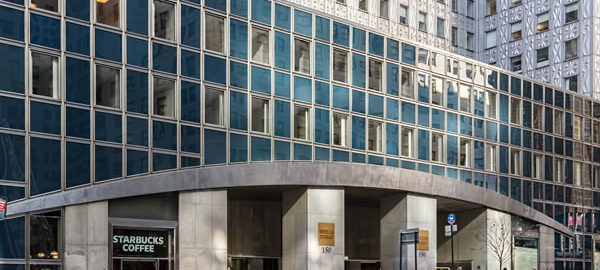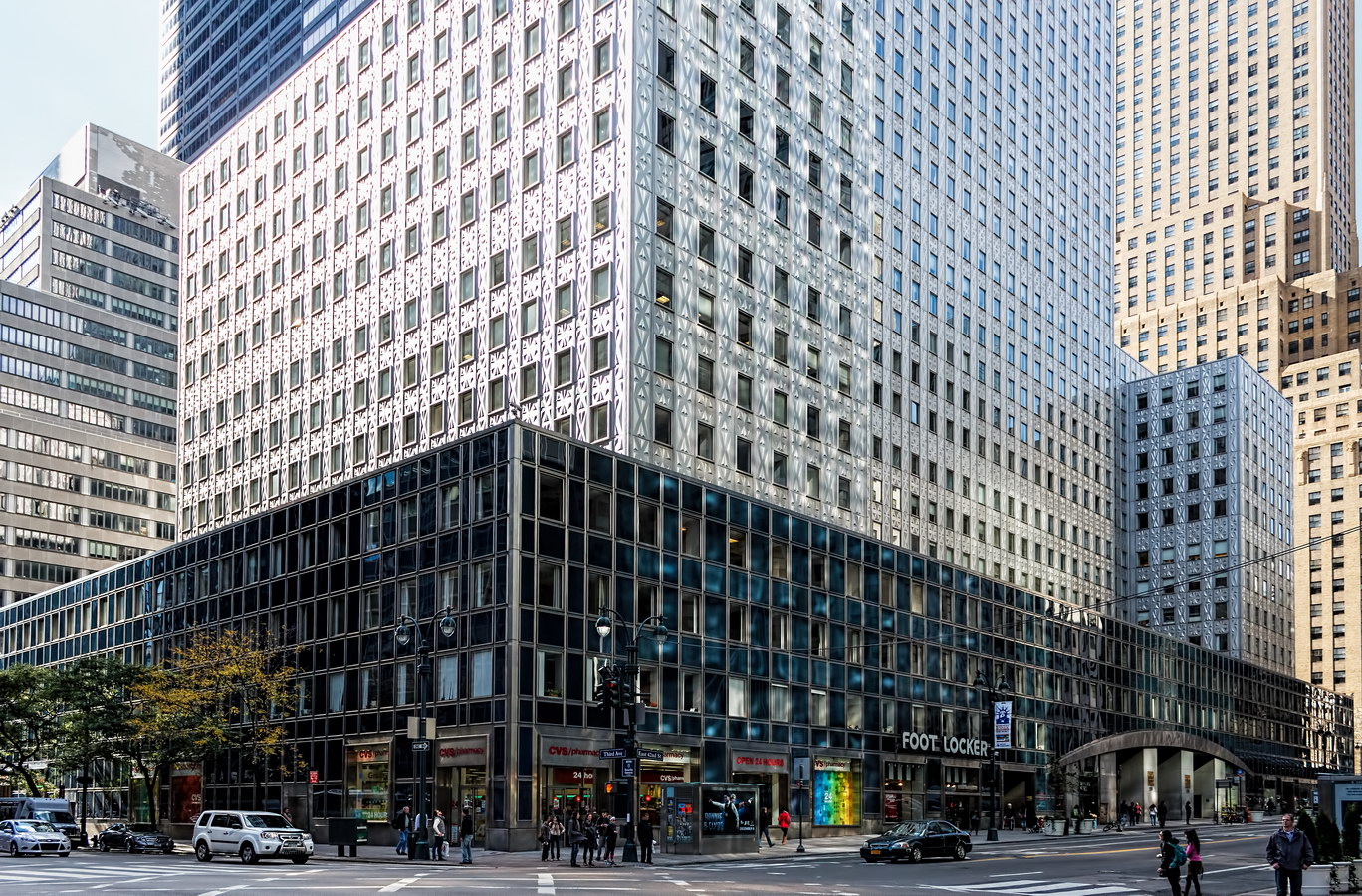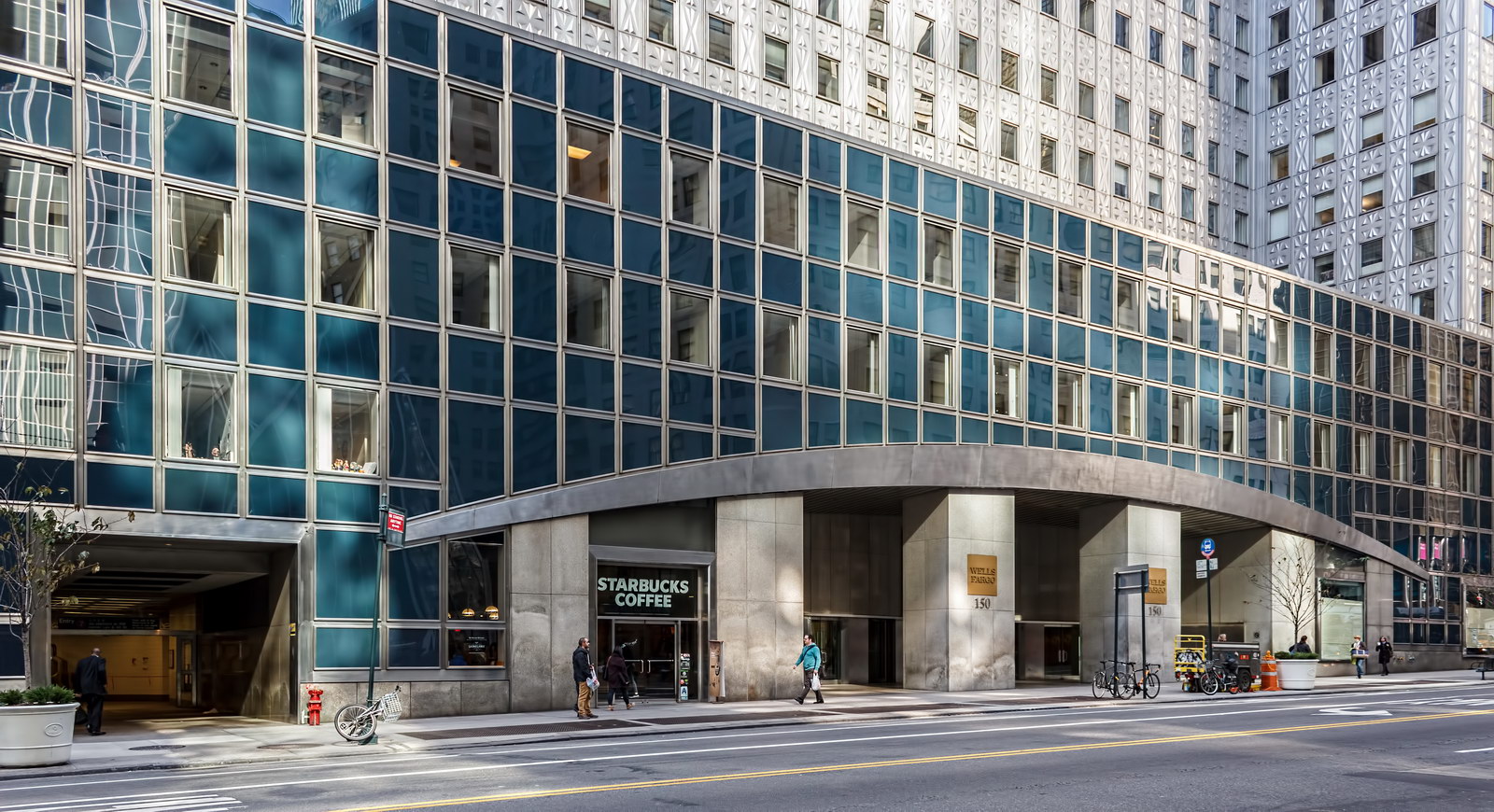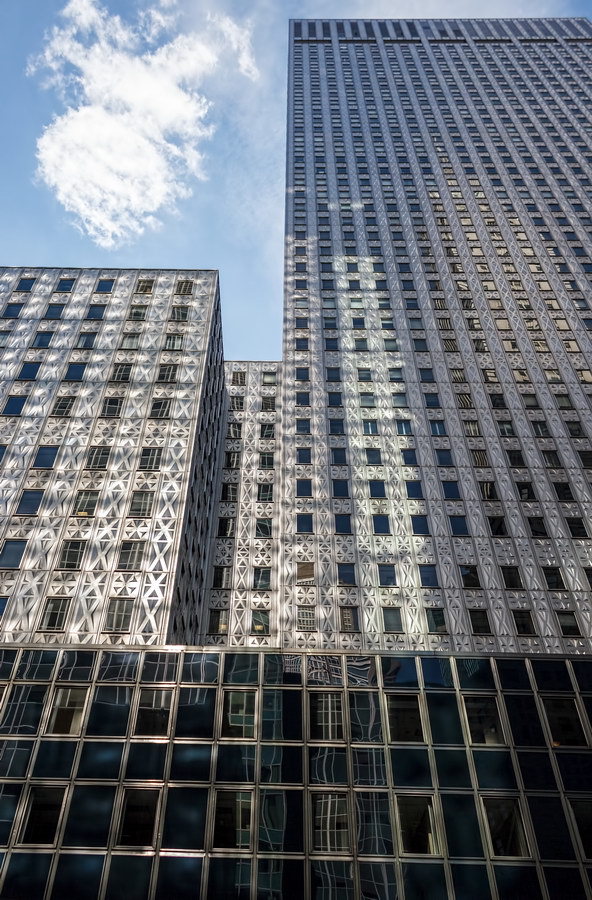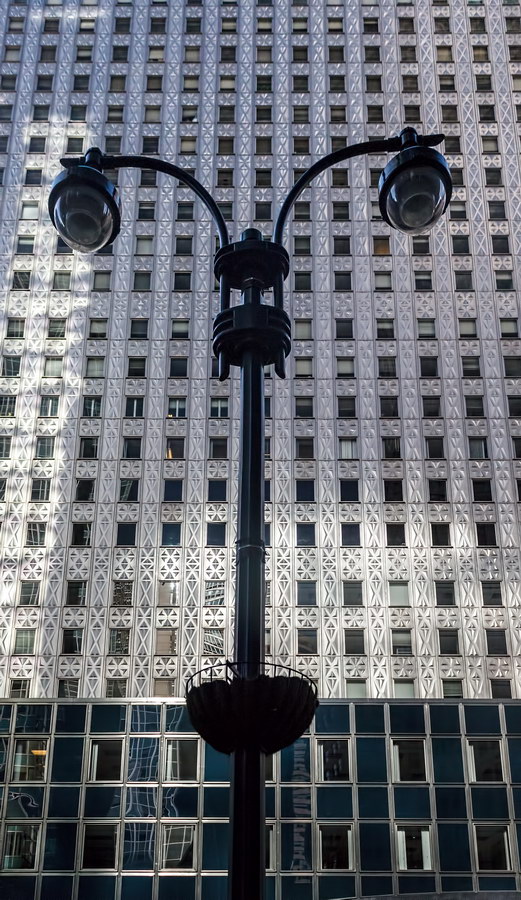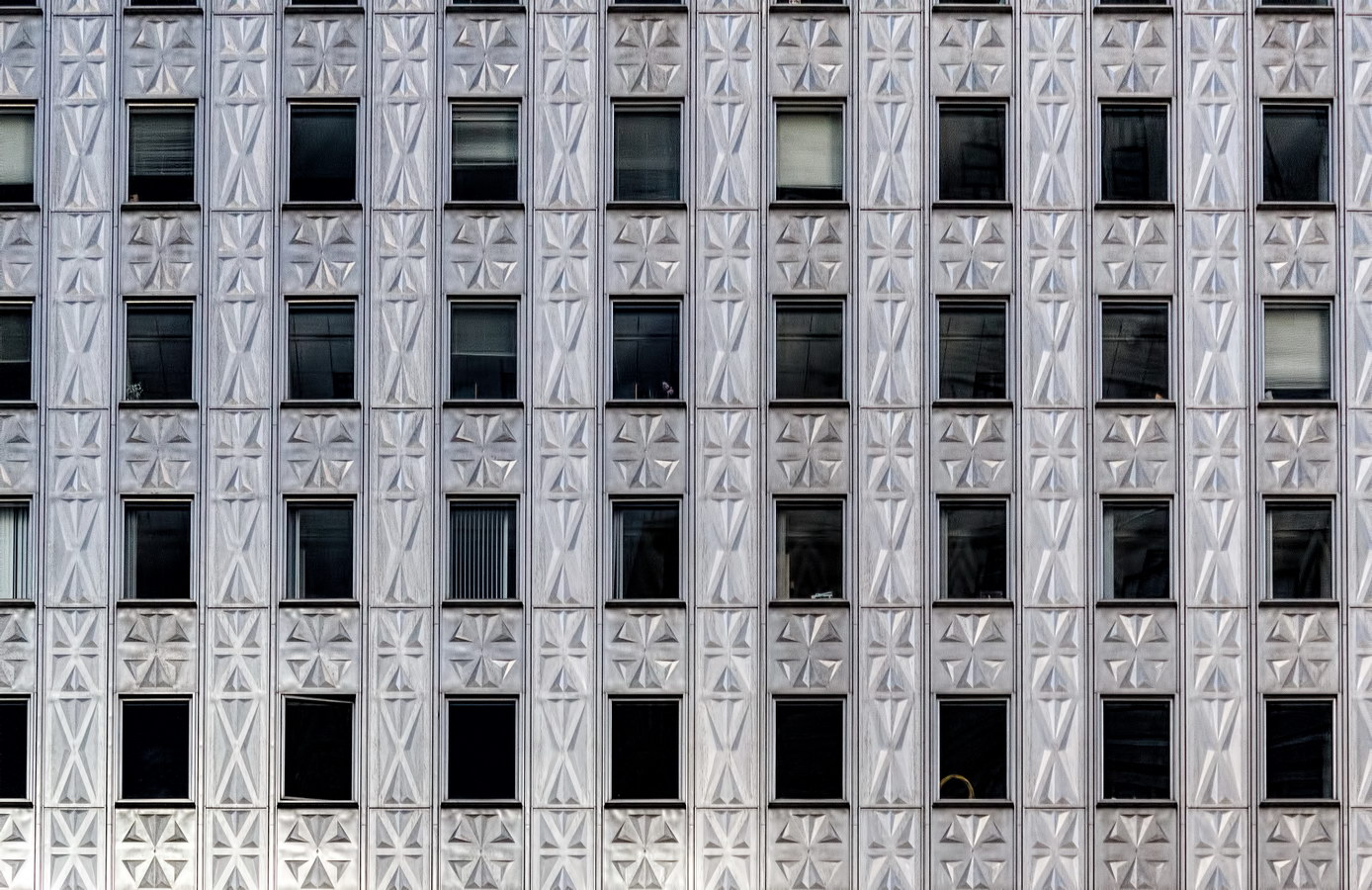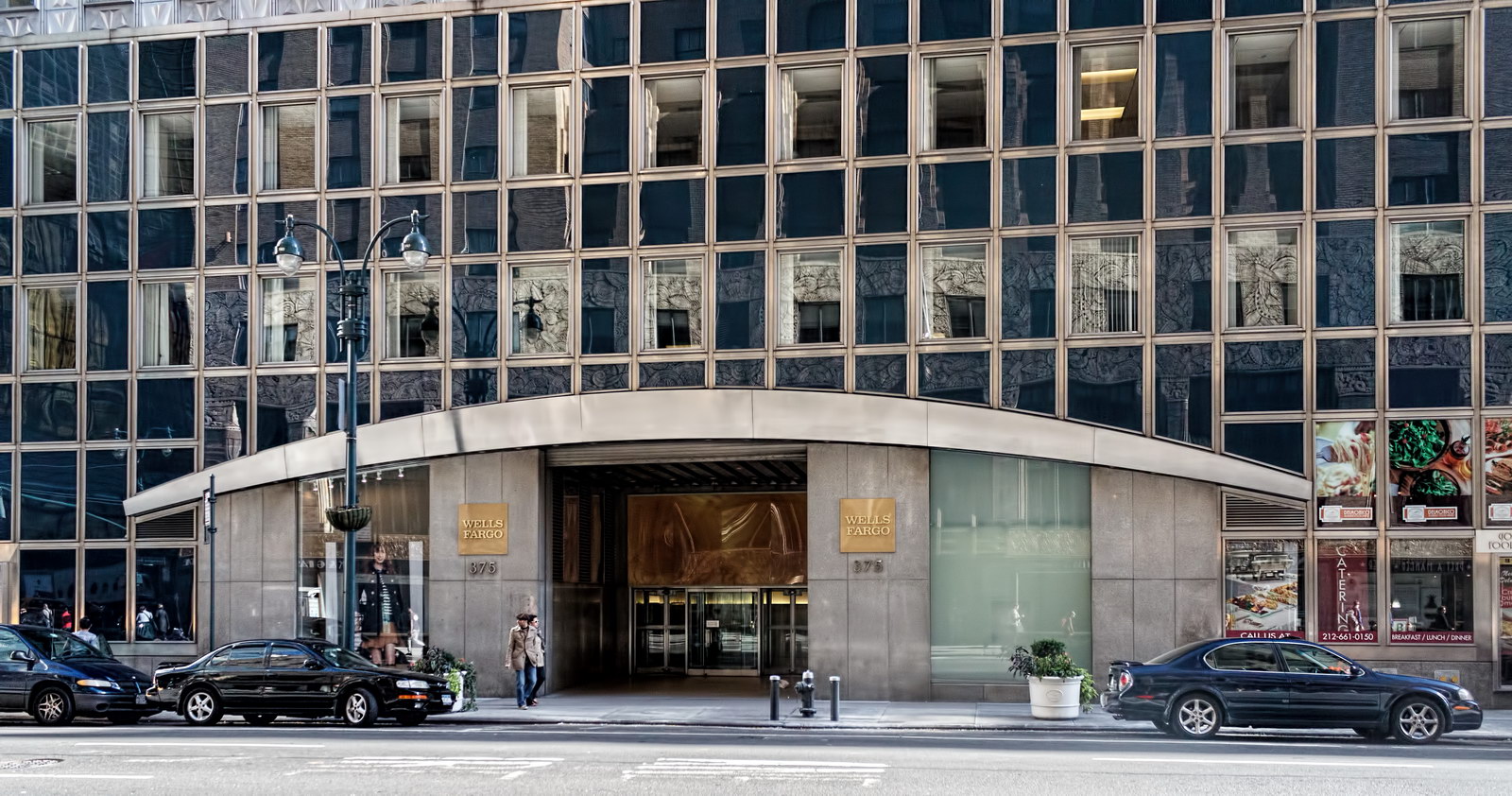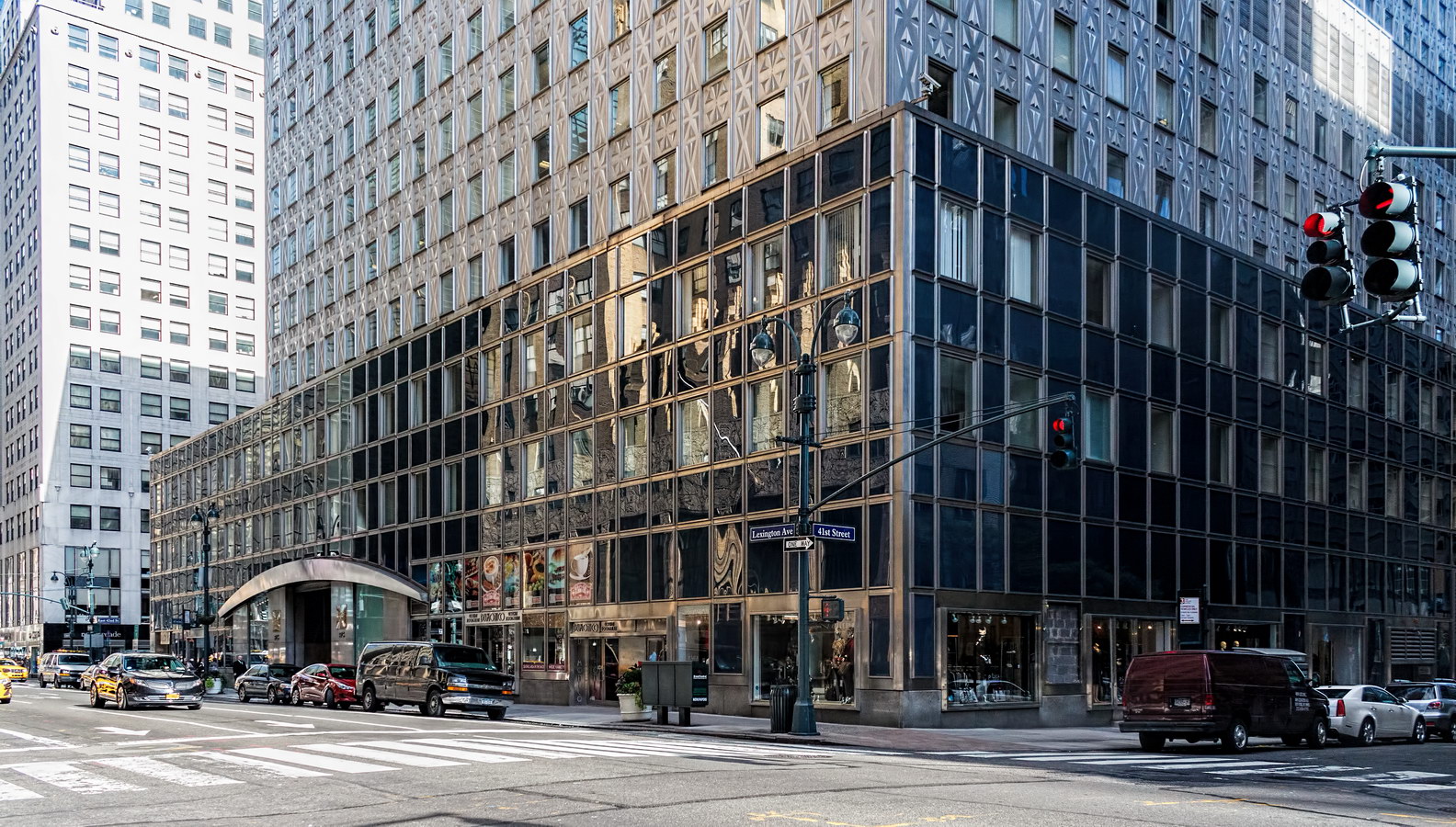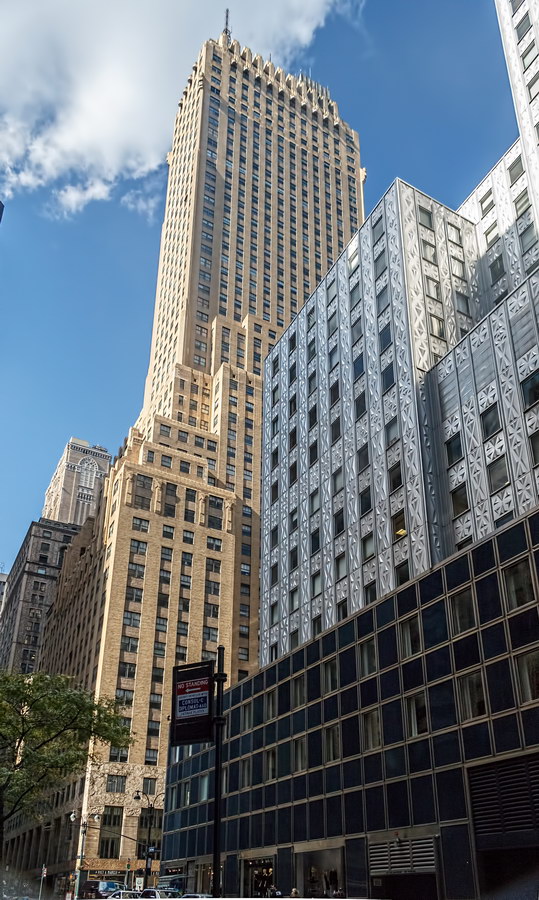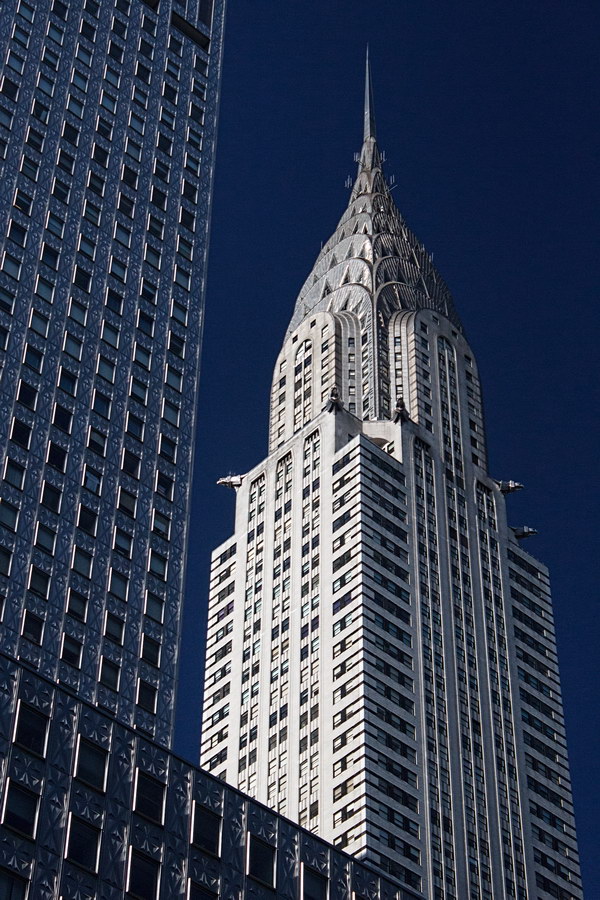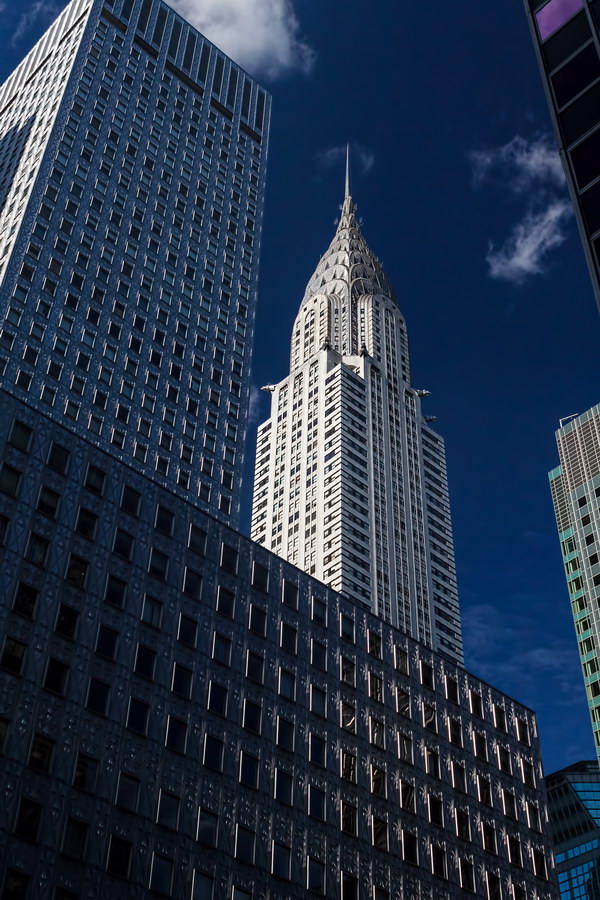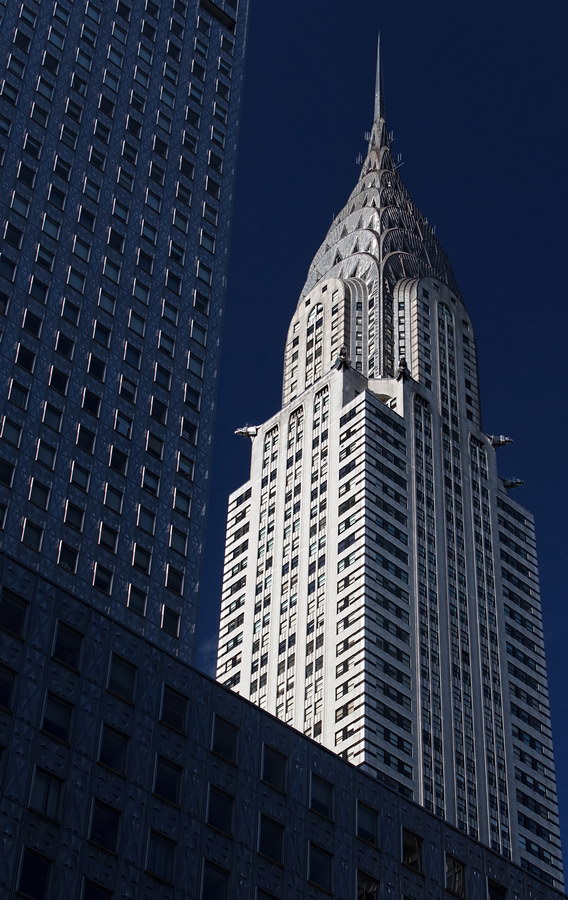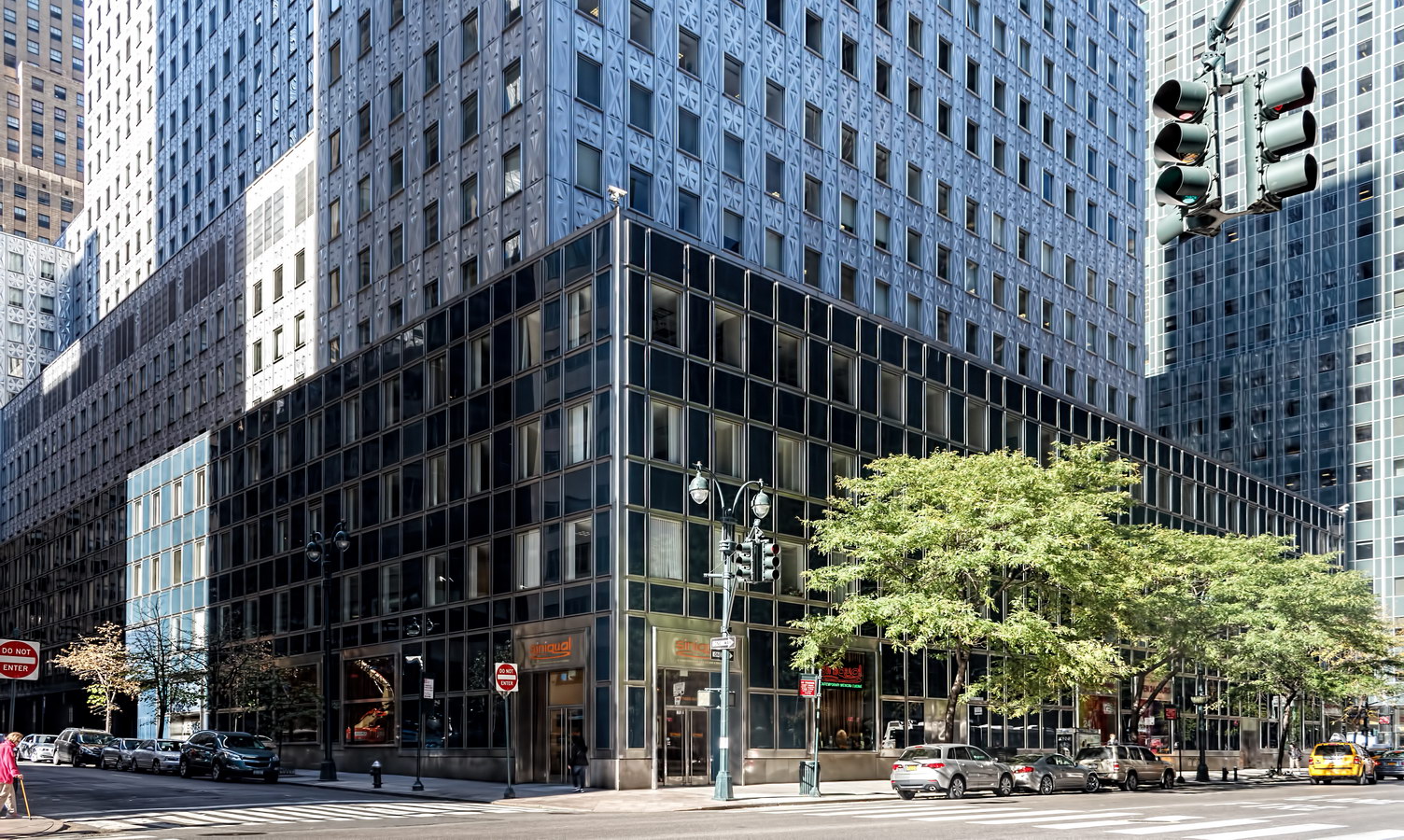Socony-Mobil Building, aka 150 E 42nd Street, is another piece of New York City “love-it or hate-it” architecture. Landmarked in 2003 as an “impressive skyscraper” with “dramatic stainless steel arches,” it is also on some critics’ “ugliest buildings” list.
The original design, by John B. Peterkin, was a 30-story brick tower rising from a garden atop a three-story granite base. The developer, Galbreath Corporation, was unable to attract prime tenants, so in 1952 new architectural muscle was called in: Harrison & Abramovitz. Principals at that firm had worked with Galbreath on other projects and, incidentally, with the Rockefeller family during construction of New York icons Rockefeller Center and the United Nations.
The Harrison & Abramovitz-revised plan was for a 42-story tower with 13-story wings, clad in stainless steel. The firm was a pioneer in metal-clad architecture, earlier completing the Alcoa Building in Pittsburgh. Aluminum was considerably cheaper than stainless steel, but the steel industry agreed to match aluminum’s price for the opportunity to promote their product.
Why metal at all? Partly marketing – to give the building a modern identity. Partly structural – like glass, metal is lighter and thinner (leaves more rentable floor space) than masonry. Partly speed – metal panels go up faster than brick.
The 7,000 steel panels were embossed with four patterns (selected from more than 100): a rosette-like motif for above and below the windows; a large and small rosette to flank the windows, and two variants displaying a design of interlocking pyramids. These last panels are less wide and appear at the eighth floor where the ceiling is higher, or at the corners of the side elevations.
These controversial patterns were explained as necessary to stiffen the panels, diminish reflections, and create a self-cleaning surface (via wind and rain). The New Yorker‘s architecture critic, Lewis Mumford, called the design a “disaster” and said that the elevations looked as if they were “coming down with measles.”
The “self-cleaning” aspect wasn’t entirely accurate – the building was scrubbed with detergent in 1995.
The building’s four-story blue glass base, not nearly as controversial, is no less striking. The E 42nd Street and Lexington Avenue facades feature massive shallow eyebrow arches of stainless steel, resting on granite piers.
One wonders: Did the architects realize how well the Socony-Mobil Building frames the stainless steel spire of the Chrysler Building across the street? It’s a spectacular photo op!
Trivia: According to the building’s website, elevators to the top floors operate at 1,200 feet per minute, while elevators in the lowest floors operate at only 500 feet per minute.
Socony-Mobil Building Vital Statistics
- Location: 150 E 42nd Street between Lexington Avenue and Third Avenue (full block though to E 41st Street)
- Year completed: 1956
- Architect: John B. Peterkin; Harrison & Abramovitz
- Floors: 42
- Style: Postmodern
- New York City Landmark: 2003
Socony-Mobil Building Recommended Reading
- Wikipedia entry (Harrison & Abramovitz, architects)
- NYC Landmarks Preservation Commission designation report
- The New York Times Streetscapes: Socony-Mobil Building; A Building of Steel On East 42d Street (October 8, 1995)
- The New York Times POSTINGS: The Socony-Mobil Building on 42nd Street; A Landmark, Measles and All (March 2, 2003)
- The New York Observer Community Boards (October 21, 2002)
- Nickel Development Institute: Timeless Stainless Architecture (pdf brochure)
- Emporis database
- 150 E 42nd Street website
